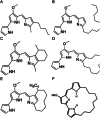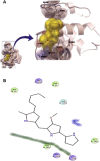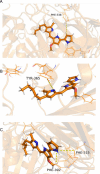Promising Prodiginins Biological Activities
- PMID: 40244866
- PMCID: PMC12435422
- DOI: 10.1002/cbdv.202402940
Promising Prodiginins Biological Activities
Abstract
Prodiginins are a large family of at least 34 pyrrolic compounds, including the well-studied red pigment prodigiosin. Prodiginins are produced by several microorganisms displaying broad biological activities, including antimicrobial, antiviral, antiparasitic, antiproliferative, and immunosuppressive activities. The present review aims to compile and analyze the main physicochemical and biological properties and mechanisms of action of prodiginins for microbial disease treatment, particularly SARS-CoV-2 disease and opportunistic infections related to COVID-19. The interaction of prodigiosin, as a model molecule, with cellular membranes, potential drug delivery devices, and toxicological studies, and in silico studies using molecular dynamics showed that the prodigiosin motif, which interacts with lipids, opens a new door for the potential therapeutic use of prodiginins.
Keywords: antiviral; biocide activities; drug delivery models; in silico studies; nanodevices; prodiginins; prodigiosin.
© 2025 The Author(s). Chemistry & Biodiversity published by Wiley‐VHCA AG.
Conflict of interest statement
The authors declare no conflicts of interest.
Figures








References
-
- Parvu S., Müller K., Dahdal D., et al., "COVID‐19 and cardiovascular manifestations," European Review for Medical and Pharmacological Sciences 26 (2022): 4509–4519. - PubMed
Publication types
MeSH terms
Substances
LinkOut - more resources
Full Text Sources
Miscellaneous

